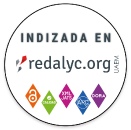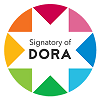Self-esteem and bullying factors in high school students in the province of Chimborazo
DOI:
https://doi.org/10.37135/ee.04.12.06Keywords:
Self-esteem, Bullying, VictimizationAbstract
The main objective of this research was to analyze the relationship between self-esteem, conceived as the perception of the qualities and characteristics contained in the self-concept itself, and the victimization factors corresponding to the phenomenon of bullying. For this, a sample of 341 students from educational units in the province of Chimborazo was used. The data obtained from the applied psychological batteries were analyzed: the Rosenberg Self-Esteem Test and the School Victimization Scale. The mean level of the level of self-esteem is x̄ = 29.81, with a standard deviation δ = 4.47. On the other hand, when considering bullying factors, the most frequent type of victimization among the sample has been relational (x̄= 15.48; SD = 4.90), followed by verbal manifest (x̄= 8.14; DT = 2.32), and the least common is physical manifestation (x̄= 4.88; DT = 1.14). It was found that most of the students have high self-esteem. There were differences with respect to gender in relational victimization, physical and verbal manifest. Finally, significant positive and negative relationships were observed between self-esteem and the different victimization factors.
Downloads
References
Olweus D. Conductas de acoso y amenaza entre escolares. 2da ed. Madrid: Ediciones Morata; 2004.
Lugones-Botell M, Ramírez-Bermúdez M. Bullying: Aspectos históricos, culturales y sus consecuencias para la salud. Rev Cuba Med Gen Integr [Internet]. 2017 [citado 06 Nov 2020]; 33(1): 154–162. Disponible en: http://scielo.sld.cu/scielo.php?script=sci_arttext&pid=S0864-21252017000100014.
Chocarro E, Garaigordobil M. Bullying y cyberbullying: diferencias de sexo en víctimas, agresores y observadores. Pensam Psicológico [Internet]. 2019 [citado 07 Nov 2020]; 17(2): 57–71. Disponible en: https://dialnet.unirioja.es/servlet/articulo?codigo=7210921.
Garaigordobil-Landazabal M, Martínez-Valderrey V, Machimbarrena J. Intervención en el bullying y cyberbullying: Evaluación del caso Martín. Rev Psicol Clínica Con Niños y Adolesc [Internet]. 2017 [citado 07 Nov 2020]; 4(1): 25–32. Disponible en: https://www.redalyc.org/pdf/4771/477152555003.pdf.
Serna-Huesca O. Análisis documental sobre el bullying utilizando la cartografía conceptual desde la socioformación. Reli Rev Ciencias Soc y Humanidades [Internet]. 2020 [citado 12 Nov 2020]; 5(23): 155–162. Disponible en: https://core.ac.uk/download/pdf/305104815.pdf.
Ramos-Noboa I, Larzabal-Fernández A, Moreta-Herrera R. Estructura factorial y fiabilidad del Cyberbullying Questionnaire (CBQ) y su complemento (CBQ-V) en adolescentes ecuatorianos. Actual en Psicol [Internet]. 2020 [citado 16 Dic 2020]; 34(128): 35–50. Disponible en: https://www.scielo.sa.cr/pdf/ap/v34n128/2215-3535-ap-34-128-35.pdf.
Larzabal A. Cyberbullying en estudiantes de bachillerato de Tungurahua (Ecuador): Prevalencia por tipo de institución y género. ARANDU UTIC [Internet]. 2020 [citado 13 Dic 2020]; 7(1): 91–118. Disponible en: https://dialnet.unirioja.es/servlet/articulo?codigo=7330469.
Garaigordobil M. Prevalencia y consecuencias del cyberbullying: Una revisión. Int J Psychol Psychol Ther [Internet]. 2011 [citado 15 Dic 2020]; 11(2): 233–254. Disponible en: https://www.redalyc.org/pdf/560/56019292003.pdf.
Tokunaga RS. Following you home from school: A critical review and synthesis of research on cyberbullying victimization. Comput Human Behav [Internet]. 2010 [citado 16 Dic 2020]; 26(3): 277–287. Disponible en: https://www.sciencedirect.com/science/article/abs/pii/S074756320900185X.
Mollá-López L, Soto-Rubio A, Martínez-Rico G. Bullying e inteligencia emocional en niños. Calid Vida Y Salud [Internet]. 2015 [citado 16 Dic 2020]; 8(2): 131–149. Disponible en: http://revistacdvs.uflo.edu.ar/index.php/CdVUFLO/article/view/253/200.
Larzabal-Fernández A, Ramos-Noboa MI, Hong-Hong AE. El cyberbullying y su relación con el estrés percibido en estudiantes de bachillerato de la provincia de Tungurahua. Ciencias Psicológicas [Internet]. 2019 [citado 18 Dic 2020]; 13(1): 134–149. Disponible en: http://www.scielo.edu.uy/scielo.php?pid=S1688-42212019000100150&script=sci_arttext.
Gerenni F, Fridman L. El bullying y su vínculo con la personalidad, el rendimiento académico y la autoestima de los adolescentes. Rev Investig en Psicol Soc [Internet]. 2015 [citado 18 Dic 2020]; 1(3): 71–82. Disponible en: https://publicaciones.sociales.uba.ar/index.php/psicologiasocial/article/view/1479/1358.
Panesso K, Arango M. La autoestima, proceso humano. Psyconex [Internet]. 2017 [citado 20 Dic 2020]; 9(14): 1–14. Disponible en: https://aprendeenlinea.udea.edu.co/revistas/index.php/Psyconex/article/viewFile/328507/20785325.
Hernández M, Belmonte L, Martínez M. Autoestima y ansiedad en los adolescentes. ReiDoCrea [Internet]. 2018 [citado 20 Dic 2020]; 7(21): 269–278. Disponible en: https://digibug.ugr.es/bitstream/handle/10481/54133/7-21.pdf?sequence=1&isAllowed=y.
Massenzana F. Autoconcepto y autoestima: ¿sinónimos o constructos complementarios? Rev Investig en Piscología Soc [Internet]. 2017 [citado 21 Dic 2020]; 3(1): 39–52. Disponible en: https://publicaciones.sociales.uba.ar/index.php/psicologiasocial/article/view/2336/1984.
Pajuelo-Flores J. Acoso escolar y autoestima en estudiantes de secundaria [Tesis de pregrado en Internet]. Nuevo Chimbote: Universidad César Vallejo; 2017 [citado 28 Dic 2020]. Disponible en: https://repositorio.ucv.edu.pe/bitstream/handle/20.500.12692/407/pajuelo_fj.pdf?sequence=1&isAllowed=y.
Rosenberg M. Society and the Adolescent Self-Image. New Jersey: Princeton University Press; 1965.
Vázquez-Morejón A, Jiménez-García R, Vázquez-Morejón R. Escala de autoestima de Rosenberg: fiabilidad y validez en población clínica española. Apunt Psicol [Internet]. 2004 [citado 28 Dic 2020]; 22(2): 247–255. Disponible en: https://idus.us.es/bitstream/handle/11441/14009/file_1.pdf?sequence=1.
Mynard H, Joseph S. Development of the multidimensional peer‐victimization scale. Aggressive Behavior: Official Journal of the International Society for Research on Aggression [Internet]. 2000 [citado 30 Dic 2020]; 26(2): 169-178. Disponible en: https://onlinelibrary.wiley.com/doi/abs/10.1002/(SICI)1098-2337(2000)26:2%3C169::AID-AB3%3E3.0.CO;2-A.
Garaigordobil M, Martínez-Valderrey V, Aliri J. Self-Esteem, Empathy and Aggressive Behavior in Adolescent Victims of Bullying “Face-to-Face”. Eur J Investig Heal Psychol Educ [Internet]. 2013 [citado 02 Ene 2021]; 3(1): 29–40. Disponible en: https://www.mdpi.com/2254-9625/3/1/29.
Romero Reignier V, Prado Gascó VJ, Soto-Rubio A. La influencia del bullying en la autoestima de los adolescentes. Calid Vida y Salud [Internet]. 2016 [citado 02 Ene 2021]; 9(1): 2–12. Disponible en: http://revistacdvs.uflo.edu.ar/index.php/CdVUFLO/article/view/255.
Siguenza WG, Quezada E, Reyes ML. Autoestima en la adolescencia media y tardía. Revista Espacios [Internet]. 2019 [citado 03 Ene 2021]; 40(15): 19-27. Disponible en: http://www.revistaespacios.com/a19v40n15/a19v40n15p19.pdf.
Hinojosa-García L, García-García P, Jiménez-Martínez A, Gracia-Castillo G. Autoestima y consumo de tabaco en adolescentes de secundaria. SANUS [Internet]. 2020 [citado 04 Ene 2021]; 14(1): 1-10. Disponible en: https://sanus.unison.mx/index.php/Sanus/article/view/180/163.
Zurita-Ortega F, Castro-Sánchez M, Chacón Cuberos R. Análisis de la influencia de la modalidad deportiva sobre la victimización en escolares de Primaria. ESHPA - Education, Sport, Health and Physical Activity [Internet]. 2018 [citado 04 Ene 2021]; 2(1): 2-15. Disponible en: https://www.researchgate.net/profile/Ramon-Chacon-Cuberos/publication/324451519_Analisis_de_la_influencia_de_la_modalidad_deportiva_sobre_la_victimizacion_en_escolares_de_Primaria/links/5ace13054585154f3f42c642/Analisis-de-la-influencia-de-la-modalidad-deportiva-sobre-la-victimizacion-en-escolares-de-Primaria.pdf.
Povedano A, Hendry LB, Ramos MJ, Varela R. Victimización escolar: clima familiar, autoestima y satisfacción con la vida desde una perspectiva de género. Psychosocial Intervention [Internet]. 2011 [citado 04 Ene 2021]; 20(1): 5-12. Disponible en: https://www.sciencedirect.com/science/article/pii/S1132055911700308.



















